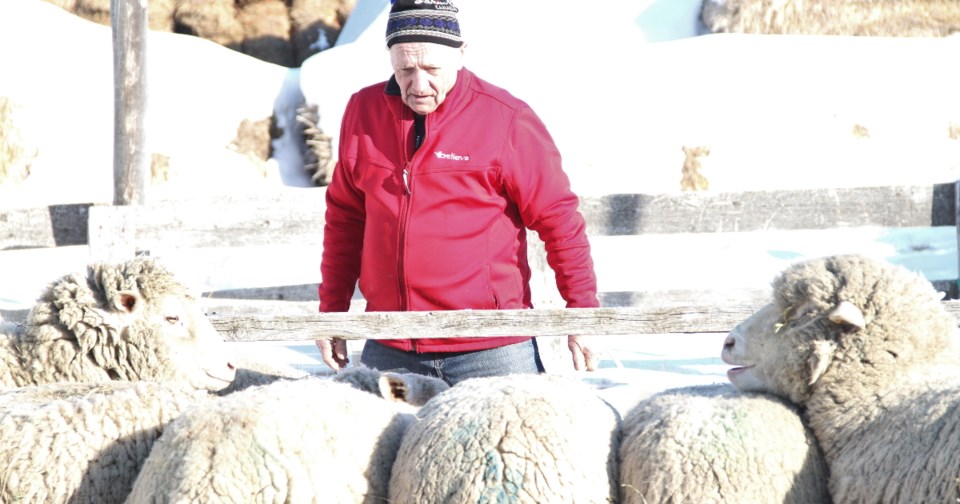PILGER — When Roland Bateman was looking to change up his Pilger cattle operation, he turned to sheep to stay farming.
Bateman said his health had been deteriorating so much that he needed something less physically demanding compared to cattle.
“I had shown beef and dairy cattle my whole life and with the deterioration, I couldn’t handle that anymore. Sheep offered that ability and challenge.”
He didn’t know much going into the sheep industry but he found that there was a lot of transferrable information and techniques that he could take from his cattle operation to apply to sheep.
Over the past 10 years, Bateman specialized in sheep breeding until once again his health took a turn for the worst and he had to sell off his 200 head herd of Canadian Arcott and Cheviots.
Now Bateman is focusing on producing wool. His herd now consists of a 20 head herd of Rambouillet, Polypay and Targhee sheep, as well as three leftover sheep from his last herd.
Bateman is now learning all about wool production with his small herd of wool sheep. Again, he is going into this new industry not having a lot of information but he is willing to learn the best practices and try them out for himself.
Sheering his former herd did not yield much in the way of quality wool so wool production was not part of his operation before. Now, with focusing on the wool sheep, he can get around $3 a pound for well-raised wool.
Being involved in the sheep breeding industry, Bateman has seen a few producers across the country make this transition to sheep from other livestock operations. Dairy barns with high ceilings and good airflow made for good transitional barns for sheep but attempts to transform pig barns into sheep barns did not work well considering the tight quarters and low ceilings.
Airflow is the most important component of any livestock barn, Bateman said, and sheep are no exception.
“Small barns here that they’ve done a conversion on have had many problems. It’s all to do with overcrowding and no airflow. If you have one baby having problems, soon you have a bunch of sick babies.”
Creating an efficient operation is also important, Bateman said. If one person cannot wrangle a sheep in little time, something needs to be done.
“If you, as one person, cannot snag an ewe in a few minutes, you need to change your operation... Then your management becomes worthy and it doesn’t take all day.”
Bateman encourages potential producers to look at other sheep operations. If you like what they are doing and they are successful and sustainable producers, you know that that operation is something to emulate, he said.
Producing good sheep and treating your customers well are two keys to success in the sheep industry, Bateman said. The market is there for sheep production in Saskatchewan, even if the market has been slow to access for producers. Bateman said the market is on its way to living up to cattle markets where it is easy to sell your animals. Right now, there are some challenges for sheep sellers and buyers to connect, he said.




